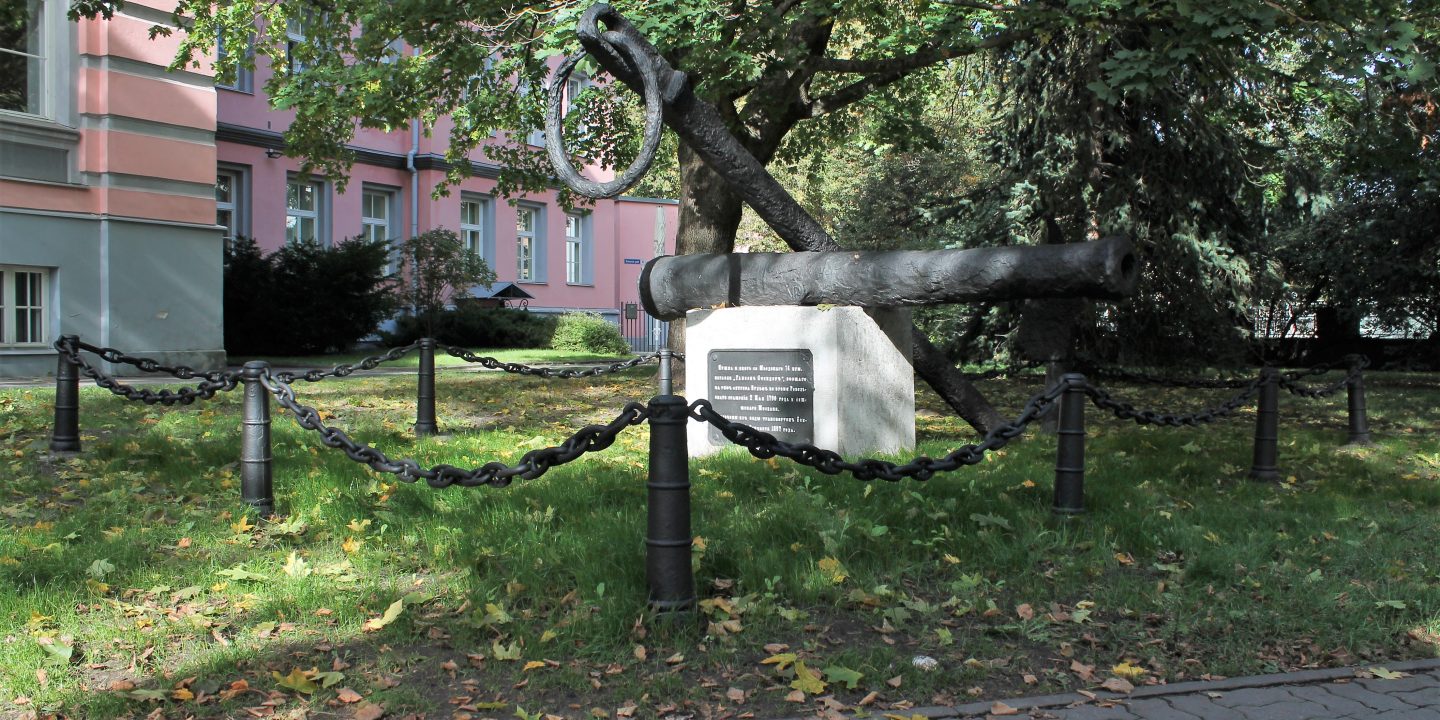Recently my wife and I celebrated our tenth wedding anniversary, and to celebrate, we took a relaxing trip to Tallinn, the capital of Estonia. Obviously, though, I had to find a memorial to make it an official Robinson adventure.
Next to the central library, under the shade of a tree, sits an anchor and cannon, a small memorial to the naval battle that took place on the shores of the city in 1790.

Gustav III’s War
Gustav III ascended to the throne during Sweden’s so-called Age of Liberty, an era of increased parliamentary governance and better civil rights but countered by numerous policy errors. He took the opportunity to reduce the authority of the Estates through a bloodless coup d’état in 1772.
Despite being a supporter of the arts and enacting numerous social and economic reforms, Gustav III was becoming increasingly unpopular. In an attempt to secure his position, he took advantage of Russia’s war with Turkey to launch a swift war that would see Sweden’s victories and give Gustav the popularity he needed.
The main issue facing Gustav was the concession he made in 1772 that did not give him the right to start a war. To get around this, a false flag attack was made at Puumala by Swedish troops in Russian uniforms. This ‘unprovoked’ attack caused the Estates to give the King permission to mobilise and declare war.
Battle of Reval
Gustav III’s War was unique because it was mainly a naval war. The opening stages of the conflict saw the Swedish fleet attempt to land troops near the Russian capital of Saint Petersburg. This was beaten back off the coast of Hogland, and the expected short war turned to a more protracted campaign.
Over the following years (1788-1790), the fleets of Sweden and Russia clashed throughout the Baltic, with neither side seeming to gain an overwhelming advantage. Not to be put off by the failures, Gustav revised his original plan to invade Saint Petersburg. To ensure the landing force wouldn’t be intercepted, the King sent his brother Prince Karl, Duke of Södermanland, to surprise Admiral Chichagov’s fleet at Reval.
On the morning of the 13th May, the superior Swedish fleet sailed into the bay and prepared for battle. The Russian fleet had been drawn up into battle formation and anchored into place the day before and no awaited their fate. Fate though would have other plans, a strong west wind struck and soon the Swedish fleet was struggling, the swaying causing the gunners to miss their targets, and the vessels unable to maintain formation. The Russian ships were steady, protected by the harbour, were able to fire all their guns as if they were training.

The Swedish fleet was in disarray, after only 2 hours, Duke Karl sounded the retreat. The panic-stricken Swedes attempted to disengage, several not even having a chance to take part in the battle. The Prinz Karl was grounded in attempting to rescue sailors from the devastated King Gustav III and was eventually forced to surrender. The Riksens Ständer ran aground on a hidden reef, unable to be refloated, she was set alight to deny her to the Russian.
The Aftermath
The defeated Swedish fleet limped into the Gulf of Finland to lick their wounds. The losses were horrific, 61 dead, 72 wounded and some 250 taken prisoner, the fleet was devastated and several vessels had to return to Sveaborg for repairs. The Russian fleet lost only 8 dead and 27 wounded, with only minor damage to their ships.

The main outcome of the battle was the failure to destroy the Russian fleet. This led to the King abandoning plans to launch his invasion as he could not secure the seas. In early June, Admiral Chichagov’s fleet met up with the main fleet from Kronstadt, giving them unrivalled supremacy.
The Memorial
As the 56-gun Ship of the Line Riksens Ständer joined the retreat, she struck rocks near Aegna Island. Unable to free her, the crew scuttled her by setting a fire, resulting in an explosion once the fire reached where the gunpowder was stored.

In September 1897 Finnish hydrographic survey ship Sekstant retrieved the anchor and one of the 12-pound cannons from the Riksens Ständer. These artefacts were installed within the grounds of what is now the Central Libray accompanying a small plinth with a plaque detailing the story of how they came to be there.
This small monument to a forgotten war stands as a testament to Sweden’s declining power and Russia’s rising potency in Europe.
Sources
Mati Öun. Naval Battles off the Estonian Coast in 1788-1790; The War of King Gustavus III and Naval Battles of Ruotsinsalmi, VIII International Baltic Seminar 5-7 July 1990 (Museum of Kymenlaakso. 1990)
Johnsson, Raoul. Kustaa III ja suuri merisota (Gustaf III and the Great Naval War). (Helsinki, John Nurminen Foundation. 2011)

